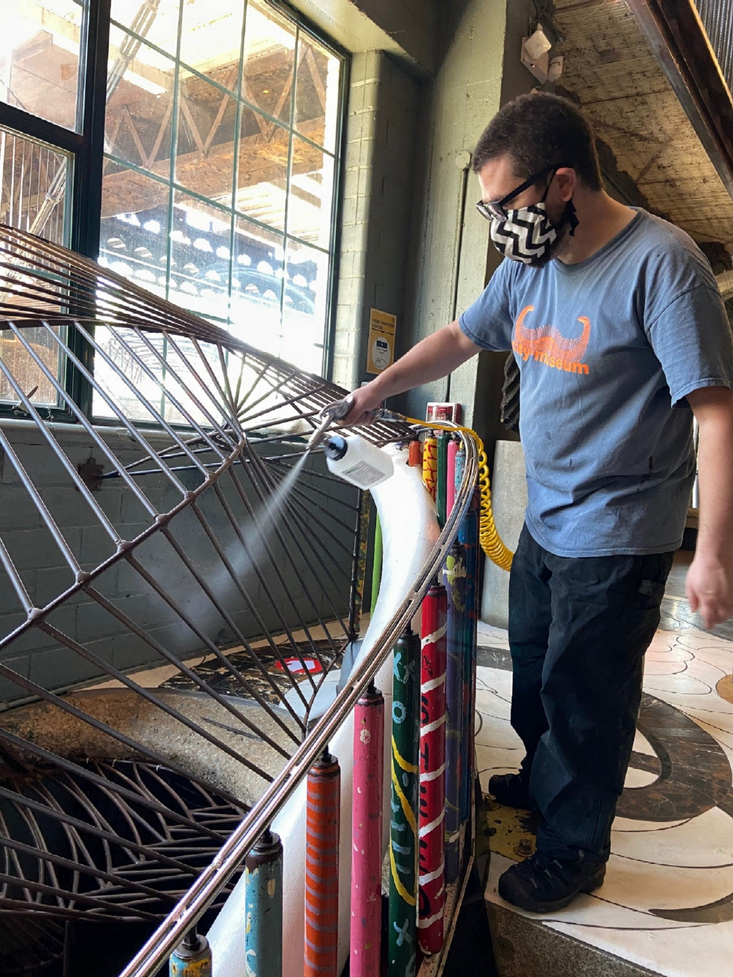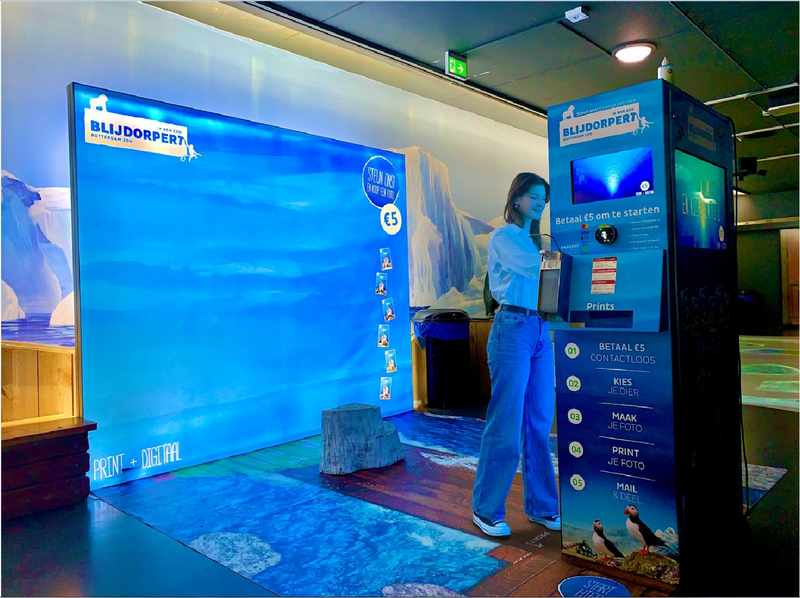Fueling the Recovery
As COVID-19 spread, so did the cooperation between attractions and their suppliers. Both operators and suppliers continue to adjust to the effects of the coronavirus.
Funworld spoke with PGAV Destinations of St. Louis, Missouri, United States, and ThisPlays International of Eindhoven, Netherlands, to share how both operators and suppliers collaborate to facilities safe during the global pandemic.

Bringing Guests Back Safely
During the onset of COVID-19, global planning and design firm PGAV Destinations launched a study on the impact of social distancing to learn how recommended separation between groups of people affected capacity and the flow of people through attractions spaces. The company then used this information to advise attractions on operational pivots and how to create new parameters for their facilities.
“One of our favorite trends that emerged during this time of keeping people ‘COVID safe’ has been the resurgence in drive thru experiences,” says Tiffany Rawson, project manager for PGAV. “From the San Antonio Zoo’s ‘Drive-Thru Zoo Boo’ to SeaWorld Orlando’s ‘Flicks & Fireworks’ event, to parking lot dance clubs and concerts, attractions pushed the envelope to create new experiences combining entertainment, education, nostalgia, and community togetherness.” Certainly, one of the advantages of drive-thru experiences is their flexibility allows them to become a repeat offering, added to the calendar at whatever frequency a facility desires.
Enhanced cleaning measures are also of great importance to attractions.
“The key will be implementing the safety measures that are important to your target audience and effectively communicating these measures to get these visitors to your attraction,” Rawson says.
She cites St. Louis’ City Museum for finding a solution borrowed from a related industry.
“They looked to the food processing industry to find a cleaning solution called Biomist that disinfects this museum’s very complex and highly tactile environment.,” she says.

Using Data to Empower Decisions
When PGAV’s annual “Voice of the Visitor” survey asked visitors about their motivations for visiting attractions, “safety” rose from being ranked as No. 14 in importance in 2019 to climbing as No. 1 in 2020. Fortunate for attractions is the data that the easier and less expensive steps—like requiring masks and providing hand cleaner—are ranked as most important. Meanwhile, measures requiring a significant investment, such as improved air filtration systems, were mentioned less often in the research and ranked lower.
Of course, one of the major downsides of all these requirements is creating a heavy, gloomy atmosphere for guests who have already endured the harsh impacts of COVID-19 for an extensive time and may be visiting attractions as an escape. So PGAV says some attractions took clever approaches to bringing a lightheartedness to the situation.
“One of our favorite examples is Walt Disney World Resort using Stormtroopers to enforce social distancing requirements between groups of people,” says Rawson, referring to the Star Wars: Galaxy’s Edge area of Disney’s Hollywood Studios in Orlando. “Great use of an existing intellectual property (IP) and executed in a way that the message delivery makes you stop and chuckle.” She reveals that another creative, funny, and on-brand effort can be found at Holiday World in Santa Claus, Indiana, United States. The park turned its hand sanitizer stations into “Santa-tizer” stations.
Rawson stresses that a benefit to attractions of making guests feel safe enough to visit will be evident in the number of visitors that pass through the front gate and remain long enough to spend more money.
As for what lies ahead, she notes now is the time to plan ahead for the days post-pandemic. “One of the things that the attractions industry might be missing now is preparing for the powerful tide of visitors that will return. Pent up demand is predicted to fuel our recovery, as many have been fantasizing about travel that was postponed and/or travel as a means of escaping everyday stress. Planning for that day now will help attractions rise above the rest,” Rawson says.

Creative Spending Opportunities
ThisPlays is a Netherlands-based provider of stand-alone photographic concepts to the attractions industry. Although several amusement parks, zoos, museums, and other facilities have reopened safely with reduced capacity, on-location rides and other experiences usually have capacity restrictions in place. As a result, on-ride photography suppliers have been impacted, with shops being kept closed because guests are unable to crowd into photo shops to view and purchase images.
Mark Van Der Weide, founder-owner of ThisPlays, says his company has found success introducing contactless “pop-up” photo shops, adding he’s found attractions are hesitant to make long-term modifications and major structural changes to facilities.
“We noticed many amusement parks, and zoos in particular, still have high-potential open spots along their main routes that do match the 6-to-9 square meters needed,” says Van Der Weide,” referring to social distancing requirements. “We turned this into an opportunity by offering revenue-share-based pop-up shops (where visitors can purchase photos). In short, we ask for only 9 square meters and an electricity outlet, and we commit ourselves to a safe, high-end photo experience.”
He says the pop-up shops follow ThisPlays’ 3S Model—Safe-Self-Service. It’s a system using a contactless payment, with hand sanitizers integrated into the experience. The revenue share allows attractions to generate a new revenue stream without having to make a large investment.
“While visitor volume dropped over 50% in many parks, our revenue per machine dropped by only 11%,” he says. “We were able to control the damage to a certain degree, while our contactless solution allowed us to stay open all season combined with the spin-off they had from shops being closed or having limited capacity.”
In 2021, Van Der Weide sees amusement parks and other attractions looking for safe, scalable, and share-based revenue streams, since some may lack the introduction of new capital expenditures. “We’re also seeing a rapid transition toward this within the museum industry, as well as some traditional zoos that used to be a bit distant when it comes to commercializing the in-house experience,” he says.
Van Der Weide also predicts a bright future for on-ride photography post-coronavirus, as face-recognition systems will evolve the traditional photo purchasing experience, to one geared toward personalization.
